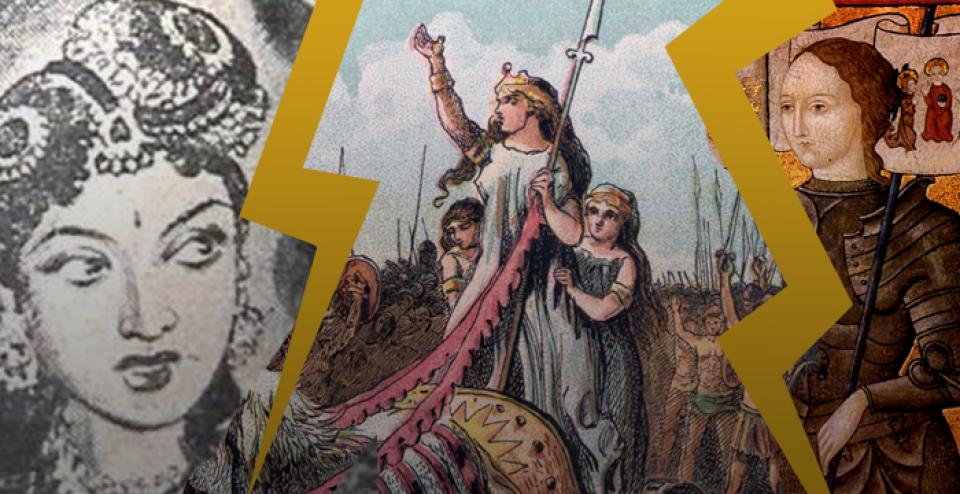
Some of the biggest questions people have had are about oneself. “Who am I?” “Where did I come from?” Archaeology, which studies the evidence that human communities leave in the land, helps answer at least a part of the “Where did I come from?” question.
In my case, archeology also helped answer the question, “Who am I?”

Nadika in Second Life
—
Çatalhöyük in current day Turkey is a site of early human civilization. Occupied about 10,000 years before present, with a continuous culture and life that lasted for about 2000 years, Çatalhöyük has interested archaeologists for a long time. The site was first excavated in 1958, and researchers keep going back to the site. Each excavation and research has revealed one of the site’s most fascinating detail: going by their buildings, art and other evidence, it seems that in Çatalhöyük society, there were no hierarchies. There were no social classes, and there was little difference between genders.
The University of California, Berkeley (UC Berkeley) and its archaeology unit too studied Çatalhöyük. The University decided to showcase Çatalhöyük in a bid to use new methods of teaching archeology. The Open Knowledge And the Public Interest, or OKAPI project, aimed to use the Internet and new digital technologies to promote open knowledge and free culture at Berkeley and elsewhere in the world.
Thus was born OKAPI Island in Second Life. For the project, OKAPI recreated Çatalhöyük on Second Life.
People can explore the landscape of the city, take on different roles, help rebuild the city based on the archaeology coming out of the ground. And more. For archaeology lovers, and I was one, this was a must-visit.
And so, I signed up to Second Life for the first time. Soon what began as an academic interest in a civilisation without gender barriers became an exercise in coming to terms with my own gender, discovering myself.
Second Life became the rest of my life.
Soon what began as an academic interest in a civilisation without gender barriers became an exercise in coming to terms with my own gender, discovering myself.

—-
I have played games for a long time.
Those 8 bit video games, Mario, Carmen, Prince, Paratroopers, and the later games were all interesting. But it was the role playing games that really fascinated me. And the strategy/city building ones. SIM city, Ceaser 3, Age of Empires. Where possible I always played as a girl. I was Boadicea, I was Joan of Arc, I was Kundhavai. Each of my online avatars had a name with a rich and powerful history. They made me feel confident in my online persona.
But my online persona was a source of discomfort for me at many levels.
Before, I thought my desires were fetishes. I believed I was a pervert for wanting to play women characters.
I believed I was a pervert for wanting to play women characters.
—-
Second Life is the largest user-generated virtual world in existence. Built by San Francisco based Linden Lab in 2003, it’s an immersive, virtual reality 3D world. It’s a role playing game where people take on avatars – 3d Selves – and live in the game. There are many islands, many worlds, many universes in SL. Each world has its own rules, its own code of conduct. Your avatar on SL is customisable. You can take any shape – woman, man, vampire, animal, vehicle, robot. You can mix and match as you please and come up with whatever rocks your boat.
On Okapi island, I had the basic, default-because-of-racism white male avatar. After a little bit of flying around Catalhoyuk, I sat down to figure out the controls and customise my avatars.

—-
Long before I started my Second Life, I knew about trans people. I had known for a while that I wanted to ‘be a trans person’. But while my understanding of who I was and what I wanted grew, practically, I was in a place where I felt I could do nothing about it.
There is a strong narrative of shame linked to trans identities in India. Given the family background and the society, and the strict norms of behaviour that the oppresive caste system imposes, to live the way I wanted to would have attracted anger, hurt, public scrutiny, violence…I wanted to avoid it all. I wanted to escape from India, away from family and the community I grew up in. I wanted to get away and transition, to become the person I was always supposed to be.
There is a strong narrative of shame linked to trans identities in India. Given the family background and the society, and the strict norms of behaviour that the oppresive caste system imposes, to live the way I wanted to would have attracted anger, hurt, public scrutiny, violence…I wanted to avoid it all.
But, in the fantasy world of Second Life, where there was no “real world” fallout, I could be the woman I was. I could be the transgender/transsexual person of my early fetishes, and the non-binary self of my current politics.
SL provided me with the perfect escape.
—-
While you can be anyone you want to be, what is truer is that to the others, you are who you claim to be. When the other Avatars see you they see the person or the thing you want to show.
My early avatars on Second Life were thin, tall, sexy Barbie like creatures. I was drawn between being that person, and “being with” that person.
At first, all I wanted to do was show myself off. I was a woman, dammit. Come admire me. A part of it also was my own fascination with pornography.
Second Life can be sexy.
Second Life can be sexy.
You can build houses and businesses. You can interact with others. You can trade with ‘real’ money.
And you can make pornography if you want to.
Worlds in Second Life – unending islands set in a limitless sea – have various levels of privacy and security. Each level – Safe, Moderate, Adult – determine how much public nudity is acceptable. A safe zone does not allow any nudity – which mean, your avatar is clothed all the time. In moderate zones, you can be nude, if the owner of the island permits it, and its community (other residents, moderators, and visitors) are okay with it. Adult zones are usually ‘clothing optional’, and full scale nudity and sex acts are often, encouraged.
It was these adult zones that I first began to explore. The ability to show off my “girly” body, and be attractive to others, be an object of desire, helped offset some of my first-life depression and dysphoria.
I was playing out some of my darkest fantasies and pervert desires here. These were also problematic understanding of my own gender and sexual orientation, sexual identity. However, the adult zones of Second Life, fed by the pornography I was consuming at other times, became playgrounds in which my identity would be shaped by the interactions I was having.
The ability to show off my “girly” body, and be attractive to others, be an object of desire, helped offset some of my first-life depression and dysphoria.
The people I met, and developed friendships and relationships with, shaped my body and my avatar, created a me I was more comfortable with than the one I was living in, in the first life.
While people attracted to transgender women existed, there was a deep stigma about them. Some were tranny-chasers, the name given to those seek trans women purely for sexual fetish, or those who objectify trans women as freaks. Not all of them are, though they are tainted by the same brush. In SL the people I met were lot more open to the idea of gender fluidity. Sex and orientation for them was a puzzle to solve, a game to play at. So they, and I, were more than willing to explore my gender.
I started building a home and building relationships with other queer women, who became my biggest sources of comfort. I negotiated sexual encounters with a confidence that is rarely commonplace in the ‘first’ world.
I dated, I had one-night-stands, I played out fantasies that I wouldn’t know how to name in the ‘real’ world.
But by then, there was nothing not-real about Second Life. The avatars were not bytes of data I was downloading on the Internet – they were real people with lives and desires as complex as mine. And by interacting with them, by building relationships with them, I was only making this reality stronger, more tangible.
I played out fantasies that I wouldn’t know how to name in the ‘real’ world.
On SL, I am a trans person and I will announce it. I have no desire to hide myself in this community. Each avatar on SL can carry a tag, a short label that floats over your head, which can be your name, your group membership, or any other detail you want on. My tag is always Real Life Transgender, the group that I belong to and belong in.
Here I found friends, and here I found the Transgender Resource Centre (TRC).
TRC helped me the way only a good, functioning resource centre can. It had weekly support meetings that I attended religiously. It provided me with resources for transitioning.
TRC helped me the way only a good, functioning resource centre can. It had weekly support meetings that I attended religiously. It provided me with resources for transitioning.
Most importantly, it gave me a safe, happy space where I could, for the first time, talk about what I was feeling.
—-
I reached a point in Second Life where my identity was not a dirty secret I had to hide from anyone. Unlike ‘real’ life, I am very open about who I am attracted to, and what I want with them, on Second Life.
—-
I came to Second Life because of my love for archeology. I explored Second Life because of my love for gaming. I stayed on Second Life because I was, and became, who I am.
In turn, Second Life took all my love and gave me something else in return: a community I could depend on, a world I could belong to, an identity I could own.
Second Life took all my love and gave me something else in return: a community I could depend on, a world I could belong to, an identity I could own.

All images sourced from Nadika’s Second Life avatars
- 11950 views






Add new comment